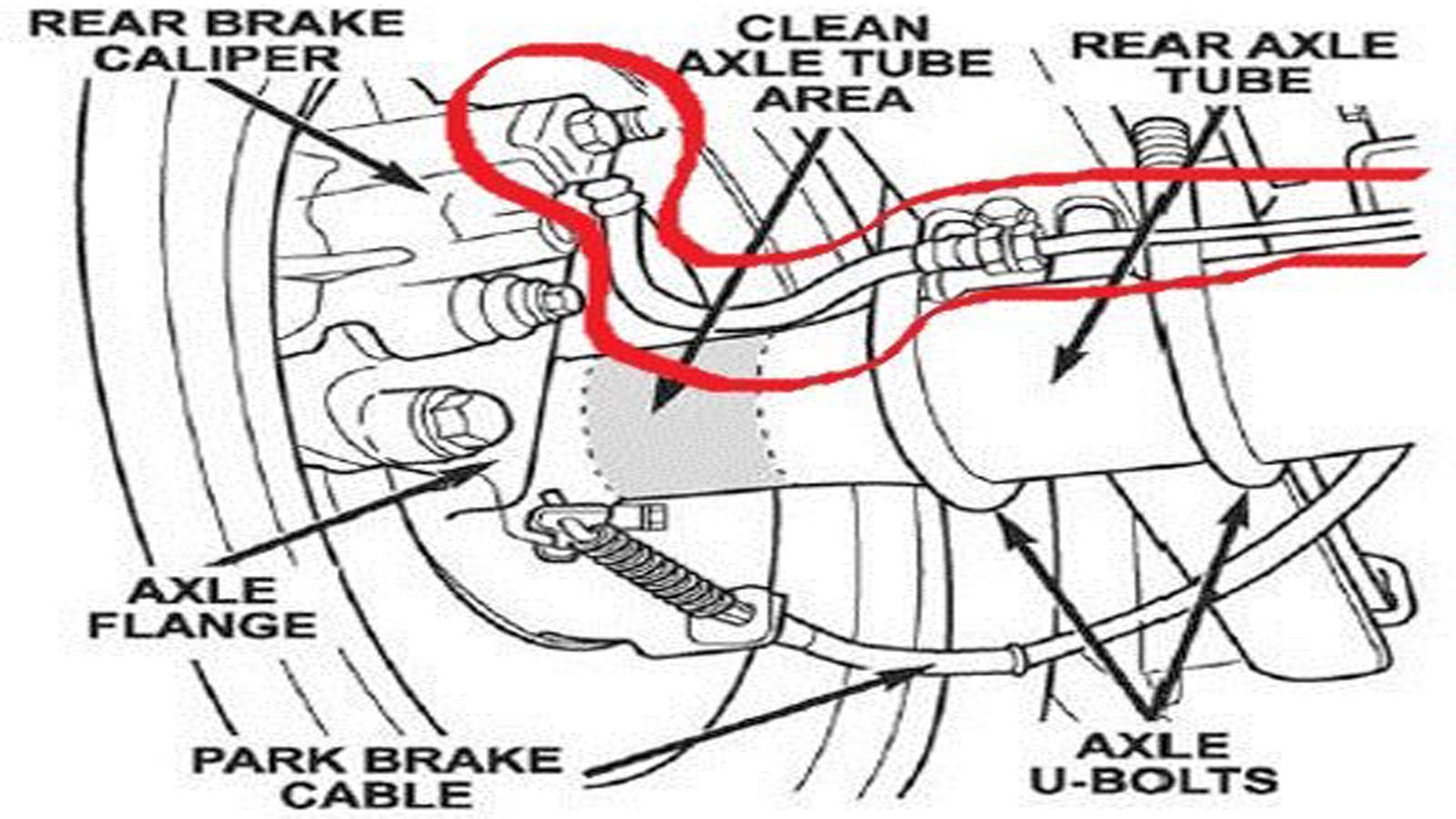DIY: Replacing the Brake Line
On most cars and trucks, a flexible rubber brake line goes from the brake reservoir, through the frame, and into the brake caliper, which is attached to the wheel. This allows the wheels to move up, down, and turn while also making sure that the brake line can move with it without interfering. Due to the fact that these lines are made out of rubber, it is possible for them to dry out and crack over time, which can cause them to leak or burst. This is especially common in areas where it snows a lot. Another reason you might need to change out your flexible rubber brake lines is that you might have done some suspension modifications, such as a lift, and need to extend the brake lines to give them extra length. Either way, the procedure is still the same. Read on to learn how to replace the brake lines on the Dodge Ram.
Before you get started
Materials Needed
- Jack
- Jack stands
- Millimeter wrenches sizes 10mm-15mm
- Millimeter sockets sizes 13mm-22mm
- Flare nut wrench set
- Shop rags
- DOT 3 or DOT 4 brake fluid
- Brake bleeder or a willing assistant
Anytime you have your vehicle raised up and possibly have the wheel off, you should inspect your rubber brake lines. These are vulnerable parts and are extremely important in making sure that your brake system works as well as it should. They should be inspected for cracks, chafing of the outer cover, leaks, blisters and other types of damages. If you see any evidence of this, then the lines should be replaced immediately.
Clean brake line fittings
You will want to clean around the brake line fittings before loosening them. This will ensure that you don't get any of the dirt or debris inside the line when you remove it, thus contaminating the brake system. After you have cleaned them off, spray them down with some penetrating oil and allow it to soak. This will help when loosening the fittings and keep you from kinking the metal line if it happens to be stuck.
>>Join the conversation about replacing the brake line right here in Dodge Forum.
Disconnect metal brake line from rubber line fitting
Using a flare nut wrench, disconnect the metal brake line fitting from the rubber brake line fitting. It is recommended to use a flare nut wrench; this way you don't round off the hex fitting. If you do not have a flare nut wrench, you can use a regular open end wrench, but take extra care not to round off the fittings. After you have loosened the fitting, disconnect the bracket holding the line to the frame. After you do this, immediately plug the line so you don't contaminate the brake system, which also prevents fluid from leaking everywhere.
>>Join the conversation about replacing the brake line right here in Dodge Forum.
Attach new brake line
Installation of the new brake line is the reverse of removal. Attach the banjo bolt end to the caliper first, and then attach it to the metal line fitting. Place the line in the bracket that attaches it to the frame, and tighten everything up. Make sure that you use new sealing washers on the banjo bolt, which attaches it to the caliper. After you have it installed, make sure that it doesn't rub on any suspension components.
>>Join the conversation about replacing the brake line right here in Dodge Forum.
Bleed the brakes
When the brake fluid level drops too low in the master cylinder reservoir, sometimes, air bubbles can get caught in the lines, reducing the strength of the brake fluid column. Removing that air out of the brake fluid column will restore the strength of the brake system.
Due to the fact that you loosened a brake line and exposed the system to air, you will need to bleed the brakes when you are done replacing the needed lines.
Bleed brakes as follows:
- Remove residual vacuum (or hydraulic pressure) by applying brake pedal several times with engine off.
- Remove cap and top off reservoir if necessary.
- Place tube of the catch can over bleeder valve on the wheel that you are going to be bleeding. Start with the farthest corner from master cylinder first, and work your way to the closest.
- Have your assistant slowly depress and hold the brake pedal in the depressed position.
- Open the bleeder screw enough to allow a flow of fluid to leave the valve. While doing this, keep eyes on the fluid being removed. It will be a dark color.
- Tighten the bleeder screw.
- Have your assistant release the pedal.
- Repeat steps 4-7 until you see fresh, lighter colored fluid coming out of the bleeder screw tube.
















